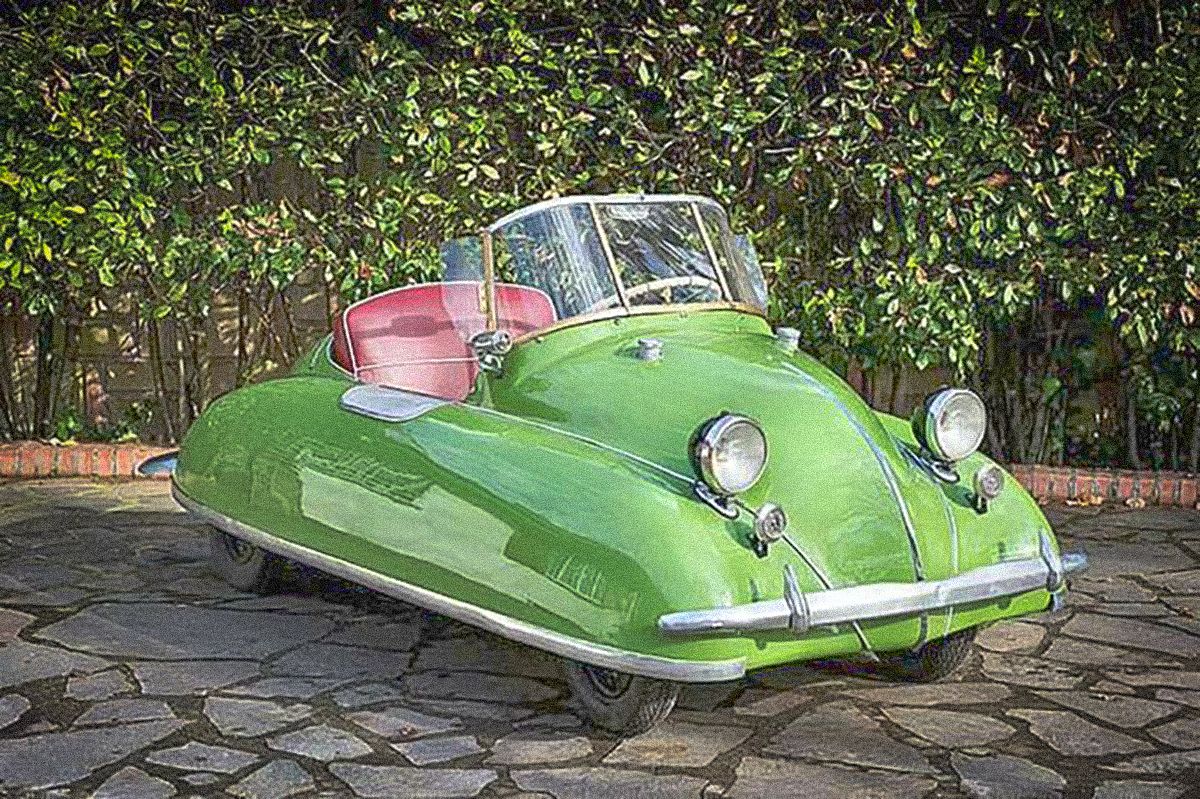
A Road Legal Bumper Car
Microcars amuse me. Much like a small motorcycle, I think they’d be great in the city, but only in certain areas.
They’d be very inconvenient on high-speed freeways, and they’d be incredibly unsafe anywhere in regular traffic with big trucks. Sure, everyone should know their surroundings, but at the same time, no one is supposed to be playing on their phones in traffic, and we all know that is definitely not the case.
In Europe, where big trucks are less common and little streets are incredibly common, something like this made perfect sense. In post-war Italy, something small and affordable seemed to be exactly what the people needed.
Italy was in pretty terrible shape in 1946, so if you wanted to sell something like an automobile, it had to be affordable. How do you make something affordable? You strip it down to the bare essentials until you hit your targeted price, of course. The Volugrafo Bimbo (great name, by the way) was stripped to the bone. It’s basically a go-kart. There’s no hood, no grille, no trunk, no doors, no firewall, no glove compartment, and no radio. If you can think of any accessory that isn’t necessary for function, the Bimbo doesn’t have it.
There’s a small bench seat that fits one, although the steering wheel and pedal assembly are slightly offset to the left, so it could barely fit two. Or one person with a small piece of luggage. The engine is a 125cc single-cylinder, air-cooled four-stroke engine that’s located conveniently right beside the driver’s left hip. There’s no electric starter, but rather a mechanical kick-starter that’s operated with the driver’s left foot, with a long linkage running back to the engine.
To access the other side of the engine if there’s an issue, there’s a little trap door in the side that resembles a fuel door. If that’s not the fuel door, then where’s the fuel go? It goes in two caps located in front of the windshield, similar to an early Ford.
The engine drives the left rear wheel with a chain (both wheels on the “sport” model), and there’s a foot-operated clutch to shift between high and low gears. The chassis is tubular steel, and the suspension is sprung with leaf springs. The steering is chain operated, and from what I can tell, it seems like a simple, go-kart-style system with double wishbones to allow for movement over rough roads.
Oddly, there are top and side curtains. Without doors, all of that has to be opened up to enter and exit the car, but it still keeps you mostly dry when driving, and I’d bet the engine heat would be enough to keep the windshield a little clear. They didn’t build many, but there are still a few left out there today, likely not on public streets, though.
Have a question or comment for Kelly?Post it below the article on our website atlmtimes.ca/kirk
Last Mountain Times Newsletter
Join the newsletter to receive the latest updates in your inbox.



